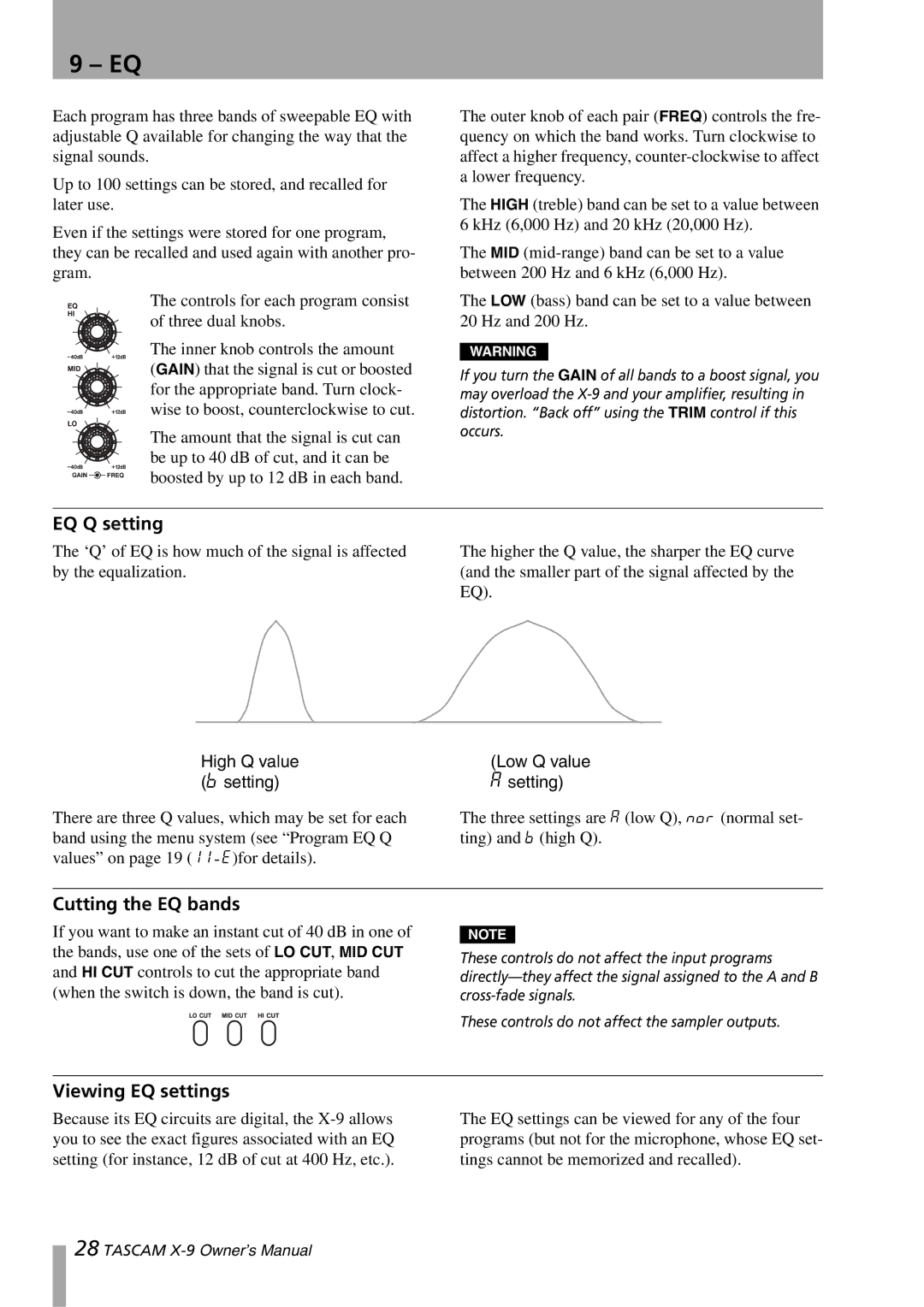
9 – EQ
Each program has three bands of sweepable EQ with adjustable Q available for changing the way that the signal sounds.
Up to 100 settings can be stored, and recalled for later use.
Even if the settings were stored for one program, they can be recalled and used again with another pro- gram.
The controls for each program consist of three dual knobs.
The inner knob controls the amount
(GAIN) that the signal is cut or boosted for the appropriate band. Turn clock- wise to boost, counterclockwise to cut.
The amount that the signal is cut can be up to 40 dB of cut, and it can be boosted by up to 12 dB in each band.
The outer knob of each pair (FREQ) controls the fre- quency on which the band works. Turn clockwise to affect a higher frequency,
The HIGH (treble) band can be set to a value between 6 kHz (6,000 Hz) and 20 kHz (20,000 Hz).
The MID
The LOW (bass) band can be set to a value between 20 Hz and 200 Hz.
WARNING
If you turn the GAIN of all bands to a boost signal, you may overload the
EQ Q setting
The ‘Q’ of EQ is how much of the signal is affected by the equalization.
The higher the Q value, the sharper the EQ curve (and the smaller part of the signal affected by the EQ).
High Q value | (Low Q value |
(b setting) | A setting) |
There are three Q values, which may be set for each band using the menu system (see “Program EQ Q values” on page 19 (11_E)for details).
The three settings are A (low Q), Nor (normal set- ting) and b (high Q).
Cutting the EQ bands
If you want to make an instant cut of 40 dB in one of the bands, use one of the sets of LO CUT, MID CUT and HI CUT controls to cut the appropriate band (when the switch is down, the band is cut).
NOTE
These controls do not affect the input programs
These controls do not affect the sampler outputs.
Viewing EQ settings
Because its EQ circuits are digital, the
The EQ settings can be viewed for any of the four programs (but not for the microphone, whose EQ set- tings cannot be memorized and recalled).
28 TASCAM
